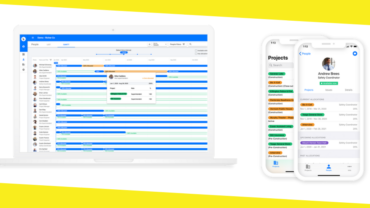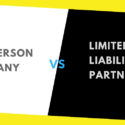Understanding How Garnishment Payroll Works
This post was last updated on December 10th, 2023
As a business owner, you likely have to deal with garnishments occasionally. However, processing garnishments is a relatively straightforward process with the right payroll system in place.
Most third-party payroll systems include features that allow you to deduct, remit, and track garnishments.

What is a Garnishment?
Using a legal process called garnishment, a creditor can legally remove something from a person to settle a debt (usually a portion of their salary). In the case of a wage garnishment, a court directs an employer to withhold and deliver an employee’s earnings to a creditor; this is how garnishments payroll works. Employees may see the amount deducted from their paychecks on their pay statements, making them aware of how much and why.
For several reasons, a creditor may initiate a garnishment to collect on a debt. For example, an employee may owe child or spousal support, past due taxes, or federal student loans. The creditor can obtain a court or government agency order that mandates an employer to garnish an employee’s earnings until the debt is paid in full.
Employers should understand the norms and regulations when managing garnishments because processing them may be challenging. Employers should have a plan to handle these garnishments effectively and ensure compliance, especially since any mistakes can lead to costly penalties.
Garnishment Orders
When a creditor gets a judgment against an employee and wins the right to garnish wages, they must file a wage garnishment order with a local court or government agency. The order must state the employee’s “disposable earnings,” which are their gross salary minus legally mandated deductions like taxes and Social Security payments. The order might additionally include reimbursement instructions and a worksheet for calculations.
The Consumer Credit Protection Act limits how much can be taken from an employee’s salary. In addition to the federal limit, most states have regulations establishing maximum garnishment amounts and procedural requirements for employers.
Your employees might feel their garnishment was unfair or made in error, so you should help them understand their rights and perform the steps required to challenge or dispute the garnishment. Employees must continue to have garnishment deductions withheld from their paychecks until they receive official notification that the garnishment has been removed or amended.
You’ll need to follow the order of priority established by state and federal regulations to ensure your payroll process is compliant. Child support garnishments and federal tax levies precede student loan or creditor garnishments. Continuing to withhold funds from an employee’s paycheck after the priority garnishments are paid can lead to noncompliance penalties, so it’s essential to be familiar with these rules.
Garnishment Fees
Wage garnishments are a thorny issue for small business owners. But they’re also a legal necessity and must be handled under payroll rules. Whether it’s a tax levy, child support garnishment, or student loan garnishment, each has specific regulations and compliance considerations. Keeping up to date with these rules ensures you can accurately calculate and withhold garnishment deductions, communicate clearly with employees, and keep detailed records that comply with the law.
How much of an employee’s paycheck can be garnished depends on the situation, but generally, it can be at most 25 percent of disposable earnings. Disposable income is the total gross income minus all legally required deductions, including Social Security, federal, state, and local income taxes—Medicare, state unemployment insurance contributions, and withholdings for employee retirement plans. Deductions for health and life insurance, union dues, and charitable donations aren’t counted in determining disposable earnings. Tips are typically excluded from garnishment because they are paid directly to the employee rather than the employer.
An employee can have more than one garnishment active at a time, but priority is given to child support, spousal support, and past-due taxes in that order. Each of these must be satisfied before any other garnishment can begin. Once the debt is paid in full, the garnishment will be released. However, it can take as long as ten weeks to process a release from the creditor.
Garnishment Process
Garnishments must be processed according to specific regulations set out by both federal and state law. If you break these guidelines, you could incur fines and penalties and possibly be responsible for the total amount of the unpaid debt. Therefore, small business owners must understand these laws and how they work.
Generally, a creditor may only garnish earnings that are in their possession or under the control of a third party, such as wages held by an employer or money deposited in a bank. It means that voluntary deductions such as employee payments to retirement plans or health insurance are not subject to garnishment. Moreover, a creditor must notify the debtor and employer of their intent to garnish and provide them with a calculation worksheet so that the exact amount of funds that will be withheld from each paycheck can be determined.
The amount of an employee’s discretionary income that may be deducted from each paycheck is constrained under the Consumer Credit Protection Act. The amount of money left over after deductions for federal, state, and local taxes, social security and unemployment insurance, medical costs, and other statutory deductions is known as disposable income. It’s also important to note that tips are not considered disposable income and may not be subject to garnishment.
Once the court orders a garnishment, the employer must withhold the appropriate amount from each paycheck and remit those funds to the creditor or agency. The order will usually include remittance instructions and deadlines.
You may like this
Recommended For You
Resource Planning Software: Why It Is Important
Most Inside
Most Inside offers high-quality recommendations and valuable updates to enhance all aspects of your life, providing premium guidance and enriching experiences.




